|
American Artist Magazine, 2012
"Historical Mediums Made Newly Available" |
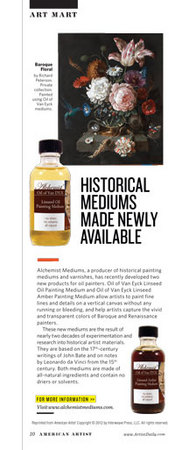 |
"Alchemist Mediums, a producer of historical painting mediums and varnishes, has recently developed two new products for oil painters. Oil of Van Eyck Linseed Oil Painting Medium and Oil of Van Eyck Linseed Amber Painting Medium allow artists to paint fine lines and details on a vertical canvas without any running or bleeding, and help artists capture the vivid and transparent colors of Baroque andRenaissance painters.
These new mediums are the result of nearly two decades of experimentation and research into historical artist materials.
They are based on the 17th-century writings of John Bate and on notes by Leonardo da Vinci from the 15th century. Both mediums are made of all-natural ingredients and contain no driers or solvents."
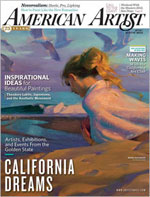
This review originally appeared in the July 2012 issue of American Artist, page 10. Copyright Interweave Press, LLC. Reprinted with permission.
|
American Artist Magazine, 2004
"Now Donald C. Fels Jr. has produced evidence of the secrets of the Flemish masters..." |
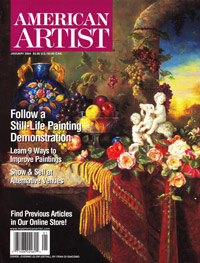 |
Artists have long speculated on the materials and techniques used by the Old Masters as they try to duplicate the appearance of paintings by Rubens, Rembrandt, Vermeer or Van Dyck. Now Donald C. Fels Jr. has produced evidence of the secrets of the Flemish masters, publishing them in a 386-page book along with an english translation of a 17th century manuscript on the craft of painting. Moreover, Fels is now manufacturing painting mediums and amber varnish that he believes will allow contemporary artists to paint in the manner of Rubens and Van Dyck.
"This book is the culmination of 11 years of research with Frank Mason in rediscovering the mediums and methods of painting, which due to the deaths of Van Dyck and Rubens and the demise of the great studio systems, became lost by the year 1700," says Fels. "Despite the fact that numerous books have been written on Old Master techniques, none to my knowledge describes in detail the temperatures, methods of manufacture, and archaic terms often listed in ancient recipes. It has been my wish in writing this book that the information and detailed recipes serve as a historical reference and guide for painters and scholars wishing to understand the painting systems of the Flemish masters. This point likewise refers to the first complete english translation of the De Mayerne manuscript, the most widely quoted manuscript on technical aspects of 17th century painting."
Within the book, Fels recommends ways of using his mediums: Linseed Thick, Linseed Thin, Painting and Grinding Medium, and Linseed Amber Varnish. The advantage of using these mediums, according to Fels, is they allow oil painters to proceed from an initial drawing to the final glazing of colors without having to wait for each coating to dry. "Painters following this system and using these mediums will be able to lay as many as five layers of paint in one sitting without the need for each layer to dry or for the addition of driers," he explains.
|
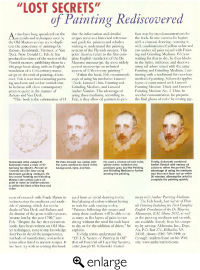 |
|
To help artists understand the "F.E.L.S. System of Painting in Oil" (Fat oil Essential oil Layering System) artist Joseph H. Sulkowski created four step-by-step demonstrations for the book. In one exercise he begins with a charcoal drawing, restating it with combinations of yellow ochre and raw umber oil paint mixed with Painting and Grinding Medium. Without waiting for that to dry, he then blocks in the lights, midtones, and shadows using oil colors mixed with the same Painting and Grinding Medium. Continuing with a traditional fat-over-lean method of painting, Sulkowski applies layers of paint mixed with Linseed Painting Medium Thick and Linseed Painting Medium No. 2 Thin. In another demonstration, he prepares the final glazes of color by mixing pigment with Amber Painting Medium.
Tennessee artist Joseph H. Sulkowski made a copy of Sir Anthony Van Dyck's Portrait of Cornelis Van Der Geer using Alchemist painting mediums.
|
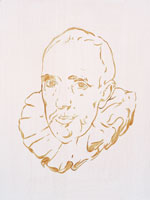 |
 |
 |
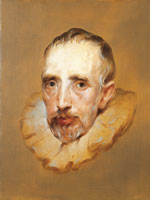 |
He first mixed Painting and Grinding Medium with yellow oil ochre oil paint to make an inklike solution to define the lines of the face and the collar. |
He then thinned raw umber with the same medium to block in the background, eyes, and hair. |
He used a mixture of lead white, yellow ochre, cadmium red, premixed gray, and the Painting and Grinding Medium to further develop the painting. |
Finally, Sulkowski combined Amber Varnish with various oil colors to refine the portrait.
|
The advantage of using the mediums was that each layer set up within 30 minutes, allowing the artist to complete the painting quickly. |
|
The Fels book, Lost Secrets of Flemish Painting Including the First Complete English Translation of the De Mayerne Manuscript, B. M. Sloane 2052, as well as the painting mediums and varnish, are available directly from his company by writing: Alchemist Mediums, Postbus 54 6245 ZH Eijsden, the Netherlands; phone: +31(0)433112153
This review originally appeared in the January 2004 issue of American Artist, page 64. Copyright VNU Business Media. Reprinted with permission. |
American Artist Magazine, 1998
"...the mediums will not run when used on a canvas in a vertical position, and they can be applied in very thin layers." |
|
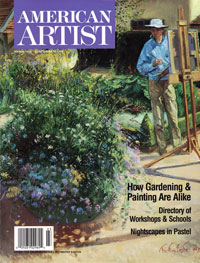 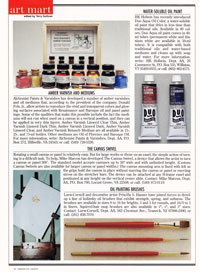
|
"Alchemist Paints & Varnishes has developed a number of amber varnishes and oil mediums that, according to the president of the company, Donald Fels, Jr., allow artists to reproduce the vivid and transparent colors and glowing surfaces associated with Renaissance and Baroque oil and panel paintings.
Some of the qualities that make this possible include the fact the mediums will not run when used on a canvas in a vertical position, and they can be applied in very thin layers. Amber Varnish Linseed Clear Thin, Amber Varnish Linseed Dark Thin, Amber Varnish Linseed Dark, Amber Varnish Linseed Clear, and Amber Varnish Retouch Medium are all available in 15-, 25-, and 75-ml bottles. Other mediums are Oil of Florence and Baroque Oil."
(Products and product sizes may have changed since the publishing of this article. The address and contact information have been left out due their changing over time.)
This review originally appeared in the March 1998 issue of American Artist, page 16. Copyright BPI Communications Inc. 1998 New York. Reprinted with permission.
|
|
|
|
|
